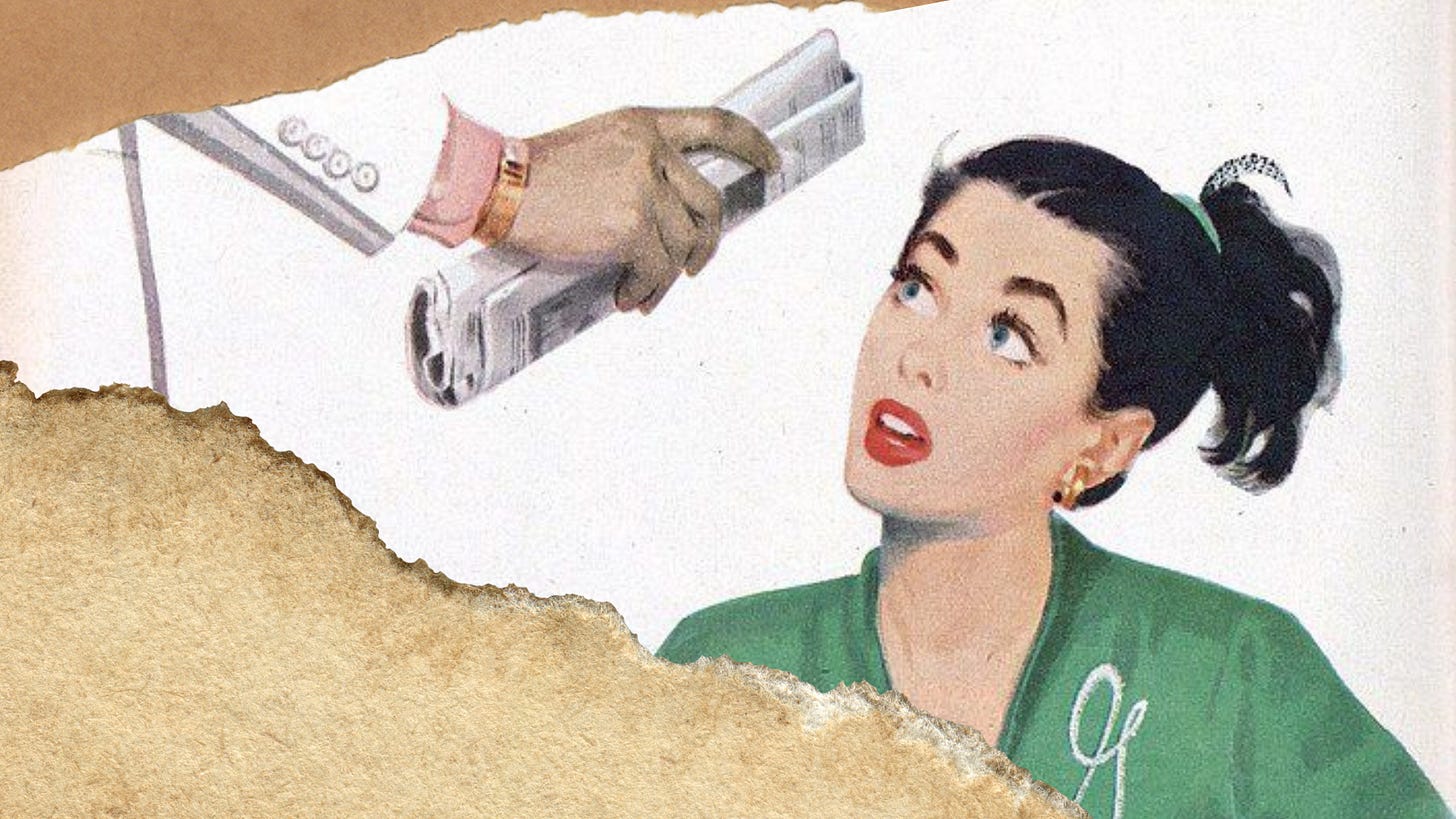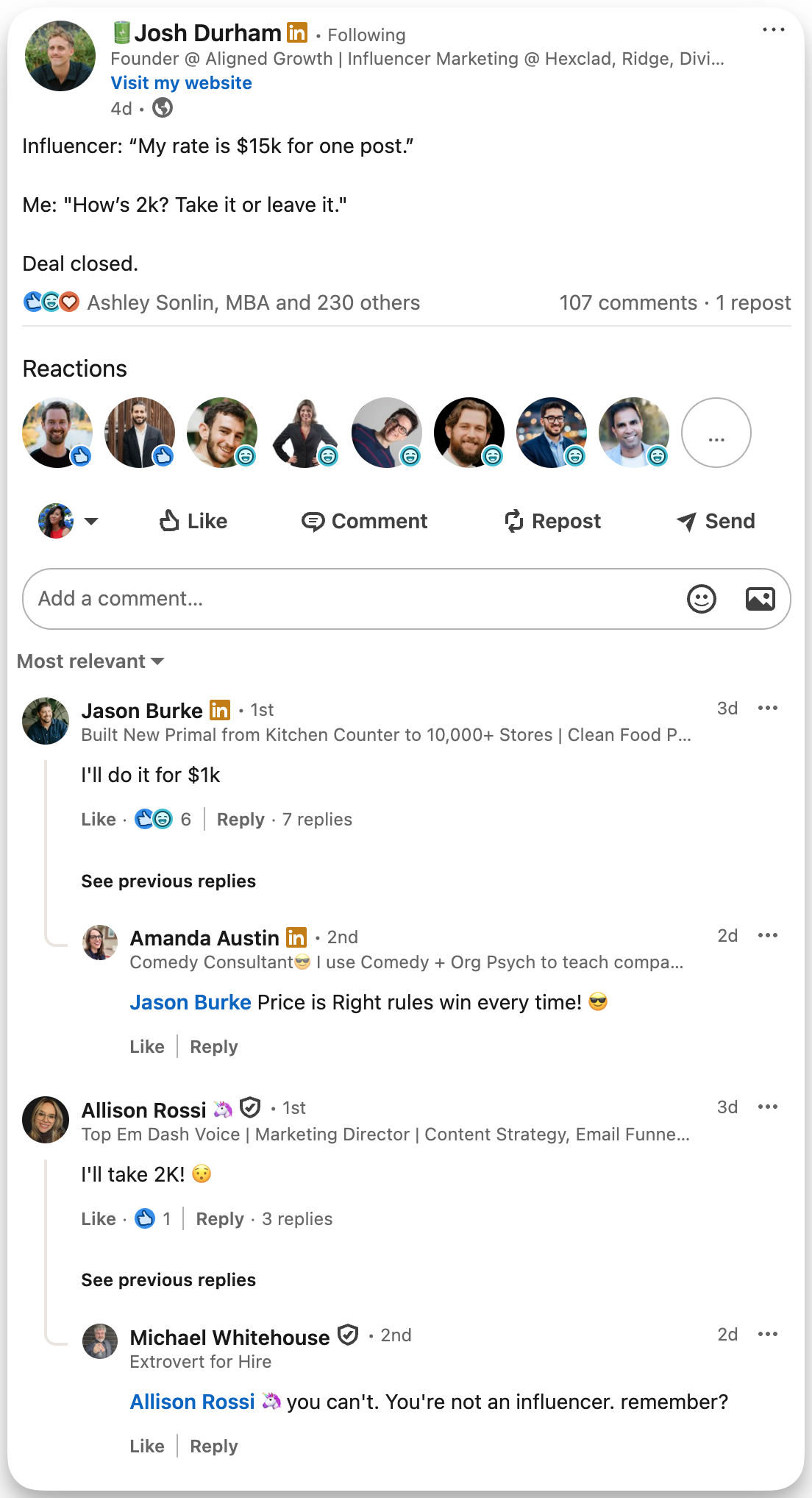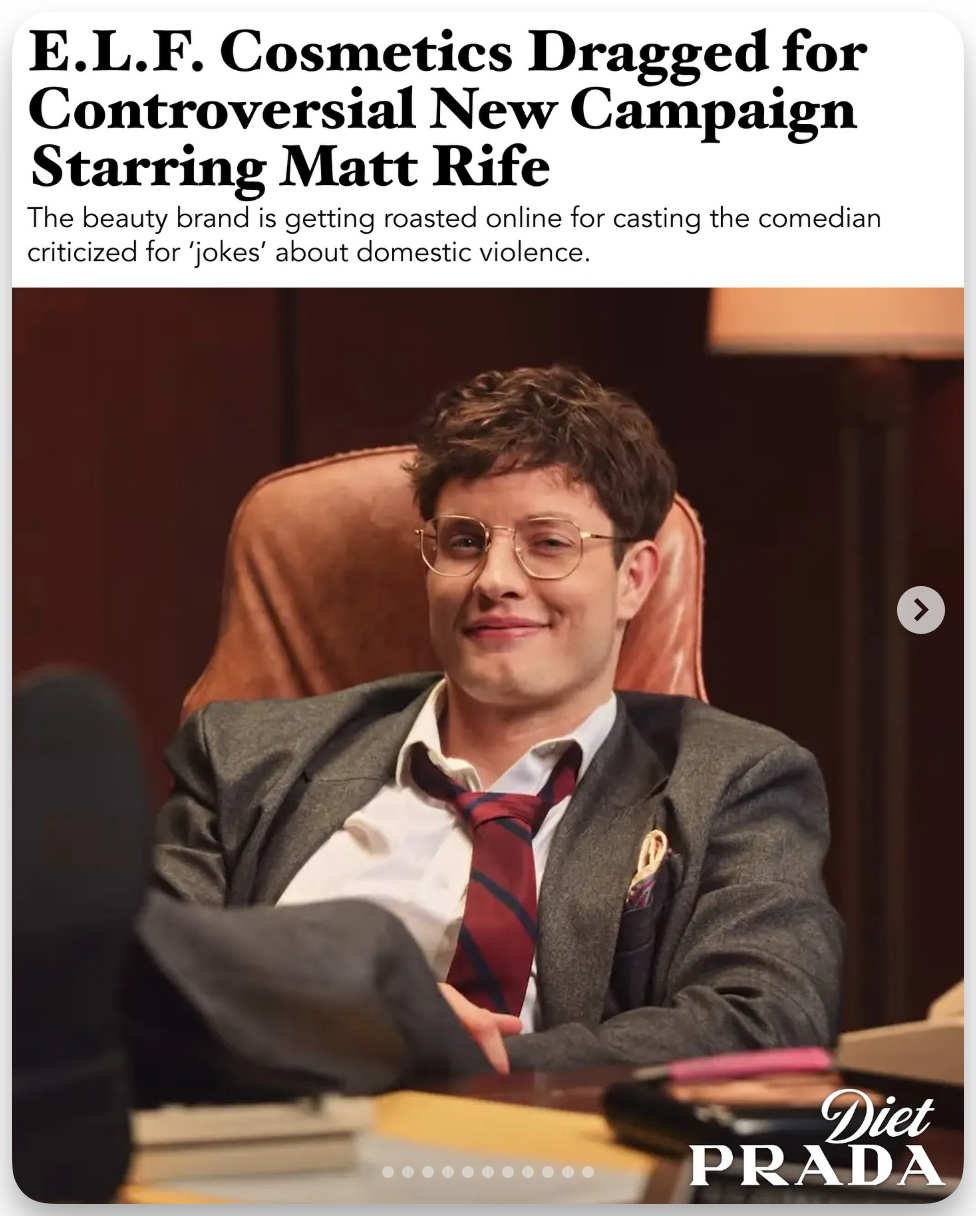So you’re thinking about creator partnerships on LinkedIn
Everyone wants in on LinkedIn creator partnerships. Fewer know how to make them work. Here’s what I’ve learned as both brand and creator.
Sometimes I wonder if marketers get more enjoyment out of poking fun of creators than actually understanding them. And maybe that’s because it’s just easier to roll your eyes at someone’s rates than actually admitting you don’t really know how to measure it. Well, I’ve been on both sides. I’ve signed off on partnership deals as a brand and I’ve been the one who was paid to post. Which is probably why I can’t shake this question: what are brands actually paying for when they partner with creators on LinkedIn?
first, let’s acknowledge the skepticism
Marketers are allergic to bullshit. And I’d be so bold to say most marketers don’t trust the value of creator partnerships. Which is why the moment someone drops their rate, the gut response is: “this much for one post?!” One creator quotes $200, another quotes $2,000, and both might have the same reach. And every so often, you’ll come across posts like Josh Durham’s, where a big number gets shaved down and the comments section cheers, feeding the idea that creators have been overvaluing themselves.
When you zoom out, the problem becomes obvious. There’s no universal pricing standard. No clean pipeline metric you can show your CFO. So of course it always feels inflated. And sometimes—if we’re honest—I think there’s a little bit of resentment baked in. Because while you’re out there grinding through briefs and budgets, someone else is getting paid thousands to “just post.” The reflex is: how is this even real work?
And I totally get that. It’s human. But it’s worth stripping the skepticism away for a second, because (and I’m gonna hold your hand as I say this) creators aren’t selling effort. They’re selling you access.
Access to an audience they’ve spent years cultivating.
Access to trust you can’t buy with ads.
Access to attention in feeds that don’t want brands there.
So the question shouldn’t be whether or not this is worth it. The question should be: what exactly am I buying here?
the business case for creators
On LinkedIn, that access is unusually valuable because of who it reaches. Instagram is about aesthetics and vibes, TikTok is known for it’s easy virality, but LinkedIn? LinkedIn’s reach tilts toward decision makers and budget holders. The people your rev team is already throwing ad dollars at.
And LinkedIn knows it. They’ve rolled out Thought Leader Ads (where you sponsor an employee’s post) and BrandLink (bundling creator-led shows with pre-roll). They’re literally productizing influence. You don’t make infrastructure out of something that you don’t see potential in.
So when you hear a creator quote a rate that makes your stomach fall to your ass, just remember that the platform itself is already betting big that people trust people more than logos.
use the cpm model (but know its limits)
So let’s say you’re new to this and staring at a rate that just makes no sense, how do you even begin to price it? This is where CPM (media speak for: cost per thousand impressions) can help. It’s not perfect, but it’ll help make it easier to understand pricing.
Take the cost of the post (the rate) ÷ (impressions ÷ 1,000). A $1,000 post that reaches 20,000 people = $50 CPM. Compare that to LinkedIn ads, which usually lands in the $30–$70 CPM range. And suddenly, that “$15k vs. $2k” debate isn’t arbitrary anymore.
Marissa Vogelsang posted actual campaign data that proves the point where even when individual posts looked inflated, her team’s total CPM averaged $17. That’s cheaper than a lot of programmatic buys.
Using this CPM model is helpful, and put your initial skepticism at ease, because it makes the economics easy to understand. But do take it with a grain a salt, and don’t confuse it with the whole story.
beyond cpm, the hidden premium
What CPM can’t capture is the trust premium.
I know this firsthand. I’ve spent years posting for free. I’ve endured the grind of engagement metrics. I’ve built a brand around tinkering until I figured out what resonated. The hours I’ve spent commenting, connecting, showing up and just posting…that’s work. That work built credibility. So when I promote something now, people listen. They book demos. They try products. They do all this because I’ve built a relationship with my community.
That’s what you’re paying for when you hire a creator. It’s not just reach. It’s credible impressions.
Anyone who’s grown a brand page knows that you can pour thousands into ads and still see nothing. People don’t trust brands. They trust the people they chose to follow.
That’s why creators cost more than media inventory. You’re not renting eyeballs alone.
when brands get it wrong
I’ve also learned that mistakes don’t just happen at the campaign level. A lot of times, they start earlier with who you choose to partner with.
Brands get dazzled by a big following or high engagement and forget to ask the obvious: does this person even make sense for what we’re trying to do? I once had a data security company offer me a hefty fee to post about their product. But I work in social and marketing. Their product didn’t touch anything related to the risks of social data. No alignment, no credibility. It would’ve been wasted money for them and a total disconnect for my audience.
The fit matters as much as the execution. And if you don’t take that into account then you’re just paying for nothing, or worse something that becomes a PR nightmare.
how to partner without losing your stomach
And even when the fit is right, the work only lands if you give the creator space. If you hand over a script or a pile of keywords, their audience is going to smell it. I’ve turned down deals like that myself because I knew it wouldn’t land.
Here’s what I’ve learned works better:
Work with the creator, don’t hand them a script. The stuff that lands best usually comes from their take on what their audience actually cares about.
Pay for the post itself and then separately for the right to reuse it. Blurring those lines almost always leads to frustration later.
Let them sound like themselves. If you try to iron out their voice to match your brand’s tone, you are gonna kill the very thing that makes people believe them.
When you treat it as collaboration instead of a transaction, you get work that feels so damn right.
the future of creator marketing???
Brands are gonna move away from one-off posts. I believe the future is smaller and more intimate, with always-on partnerships. Brands teaming up with niche creators to co-own a series, have recurring conversations, and maybe even embed them like an extension of the team.
Look at Jasmine Enberg’s point: influencer marketing spend is growing faster than nearly every digital channel (15% in 2025!). Platforms are consolidating more of it through creator ad products. Influence isn’t gonna be just an experimental side play anymore. Because it’s evolving into part of the core media mix.
If LinkedIn is turning creator trust into infrastructure, you can bet your bottom dollar that the rest of the industry will follow.
soooo what was the point of this again?
It’s easy to dismiss creators as overpriced freelancers with inflated egos. I get it. But I also know what it’s like to do what they do, because I’ve done it. Most people, including the brands, only ever see the shiny tip of the iceberg. They don’t see the years of unpaid hours underneath it. Or the endless rethinking of drafts. And, omfg, the second guessing your self worth when something flops. It’s the sting of being judged by engagement alone, and the persistence it takes to keep showing up.
That’s what you’re paying for. The collapsed distance between your brand and the people you want to reach. You’re paying for credibility you can’t just buy through ads.
And yeah, it’s wild sometimes. But that’s how every new aspect of marketing feels. Don’t let the lack of experience and understand translate into cynicism. Let it make you approach with care. Measure the pieces you can. Respect the ones you can’t. And keep it moving. Trust has always been only currency that really matters in marketing.






Wow this was such an interesting piece. I didn't really know how much digital creators were charging so this was an eye opener. What I've seen from my fav influencers is that their paid partnerships usually pay off because when its a product, it usually gets sold out in minutes!
Thank you for keeping this one REAL as you always do. It spoke to me because I am currently building my following and it’s not an easy one; so for someone to downplay that because they didn’t experience what I went through is frustrating. I saw this somewhere: You’re not paying me because I can get the difficult job done in 10 minutes, but for the 10 years it took me to learn how to do the job in 10 minutes.